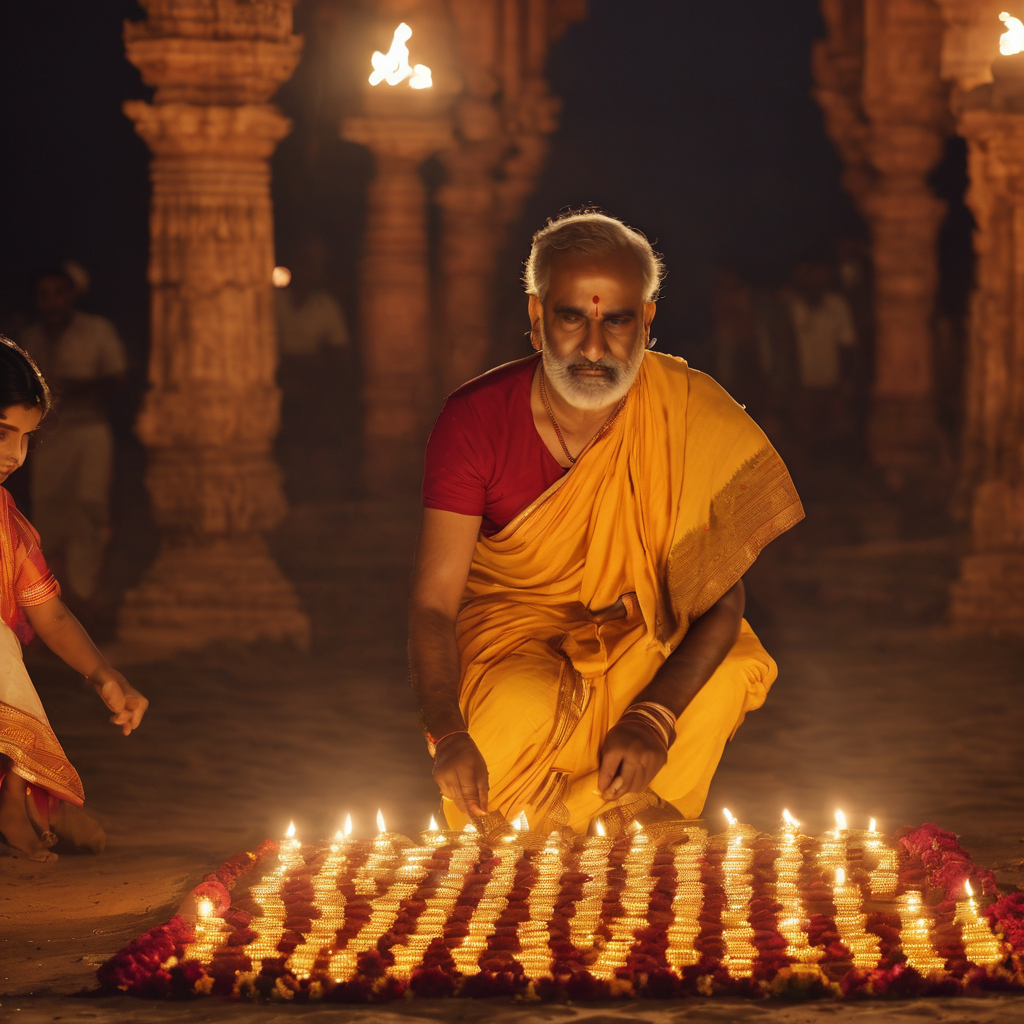Diwali, also known as Deepavali, is one of the most significant and widely celebrated festivals in India. It marks the victory of light over darkness and good over evil. At the heart of Diwali lies a compelling narrative from Hindu mythology, the story of Lord Rama. This tale is an integral part of the festival, and it encapsulates the essence of Diwali, emphasizing the triumph of righteousness and the enduring power of hope.
The Ramayana: An Epic Tale
The story of Lord Rama is told in the epic ancient Indian epic, the Ramayana. Attributed to the sage Valmiki, the Ramayana is a narrative poem that consists of seven Kandas, or books. The central story revolves around the life and adventures of Lord Rama, who is believed to be the seventh avatar of Lord Vishnu, one of the principal deities in Hinduism.
The Birth of Rama
The story begins with the birth of Rama, the prince of Ayodhya. He is the eldest son of King Dasharatha and Queen Kaushalya. His birth is celebrated on Rama Navami, a Hindu festival that occurs in the spring.
The Exile of Lord Rama
As the story unfolds, Rama is destined to become the king of Ayodhya, but his stepmother, Queen Kaikeyi, seeks to secure the throne for her own son, Bharata. With the help of a boon granted to her by King Dasharatha, she asks that Rama be sent into exile for fourteen years.
Rama, ever obedient and respectful, willingly accepts his father’s decision and sets out for the forest with his wife, Sita, and loyal brother, Lakshmana. The forest is filled with challenges and adventures as Rama, Sita, and Lakshmana encounter sages, demons, and allies along their journey.
The Abduction of Sita
One of the most pivotal events in the Ramayana is the abduction of Sita by the demon king Ravana. While Rama and Lakshmana are away from her briefly, Ravana, disguised as a sage, tricks Sita and carries her away to his kingdom of Lanka. Rama’s desperate search for Sita and the help he receives from the monkey-god Hanuman are key episodes in the story.
The Battle Against Ravana
Rama’s quest to rescue Sita culminates in a great battle between the forces of good and evil. With the support of an army of monkeys and allies, Rama engages in an epic struggle against Ravana and his demon army.
The climactic battle, fought with divine weapons and great valor, eventually leads to the defeat of Ravana and the rescue of Sita. The triumph of Rama and the restoration of dharma (righteousness) is celebrated with immense joy and rejoicing.
The Return to Ayodhya
After the victory over Ravana, Rama, Sita, and Lakshmana return to Ayodhya. Their return is celebrated with the lighting of countless lamps and diyas to symbolize the triumph of light over darkness. This grand celebration is what we now know as Diwali.
The Diwali Traditions
The traditions of Diwali are deeply rooted in the story of Lord Rama. Here are some of the ways in which the festival is celebrated in connection with the epic:
- Rama’s Return: The lighting of lamps and diyas is symbolic of the path lit by the people of Ayodhya to welcome Rama, Sita, and Lakshmana back home. The tradition of illuminating homes with oil lamps and candles during Diwali signifies the victory of light and goodness.
- Victory Over Evil: Fireworks, a hallmark of Diwali celebrations, are believed to symbolize the fireworks that went off as Rama and his army returned to Ayodhya victorious.
- The Worship of Goddess Lakshmi: Diwali is also associated with the worship of Goddess Lakshmi, the goddess of wealth and prosperity. It is believed that she visits homes during Diwali, and people light lamps and offer prayers to welcome her and seek her blessings.
- Exchange of Gifts: The tradition of exchanging gifts during Diwali is a way to express joy and happiness, reminiscent of the joy felt by the people of Ayodhya at the return of their beloved prince.
Diwali Celebrations Across India
The story of Lord Rama and Diwali is celebrated with great fervor across India, but the customs and traditions may vary by region:
- In North India, the day of Diwali is associated with Lord Rama’s return to Ayodhya. People light oil lamps, burst firecrackers, and create rangoli patterns to welcome Rama back.
- In South India, Diwali is often associated with the legend of Lord Krishna’s defeat of the demon Narakasura. People celebrate with oil baths, feasts, and the bursting of firecrackers.
- In Bengal, the festival is known as Kali Puja, and it is celebrated to honor the goddess Kali. The festival has a distinct cultural significance in this region.
- In the western state of Gujarat, Diwali is celebrated with great enthusiasm through events like the lighting of lamps, fireworks, and the playing of games.
The story of Lord Rama’s journey, his trials, his unwavering commitment to dharma, and his ultimate victory over evil serves as the foundation of Diwali’s significance. It is a tale that transcends time and place, and its enduring message is a reminder that good will always triumph over evil, light will dispel darkness, and hope will conquer despair.
Diwali, celebrated with the story of Lord Rama at its core, symbolizes the triumph of righteousness, love, and unity. As the lamps are lit and the fireworks illuminate the night sky, we are reminded that the celebration of Diwali is not just a festival; it’s a reaffirmation of the eternal values that guide us toward a brighter and more hopeful future.

